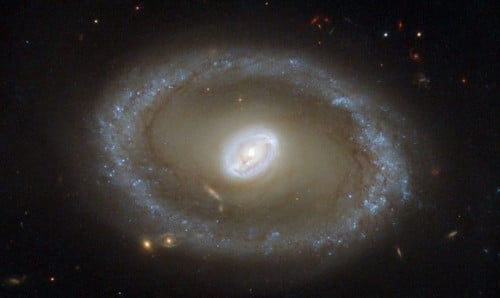The center of the galaxy is surrounded by a loop known as a resonance ring. Filled with bright clusters and bursts of star formation, the ring frames the supermassive black hole

Let's look at a picture of a galaxy that is 86 million light years away from us. In the center of the image you see a bright loop surrounding the core of the galaxy and its central pole (a common configuration in spiral galaxies). It's where stars are born, say scientists studying a new Hubble Space Telescope image of galaxy NGC 3081.
"Compared to other spiral galaxies, this galaxy looks a little different," NASA said in a statement. The center of the galaxy, which looks like a long rod of stars, is surrounded by a loop known as a resonance ring. Filled with bright clusters and bursts of star formation, the ring frames the evidenced supermassive black hole at the center of the galaxy, known as NGC 3081. This ring glows brightly as it rapidly devours matter falling into it.
The term resonance ring refers to an area where gravity causes gas to concentrate in certain areas, and the result can look like a ring. The scientists add that NGC 3081, which is in the Hydra (Sea Serpent) group, is just one example of bar-centered spiral galaxies containing this type of resonance rings.
The image was composed of a combination of photographs at several frequencies: visible light, infrared light and ultraviolet light.

One response
Hmmm.. I didn't know Hydra was a sea snake... Now I understand the symbol of the Nazis in Captain America!